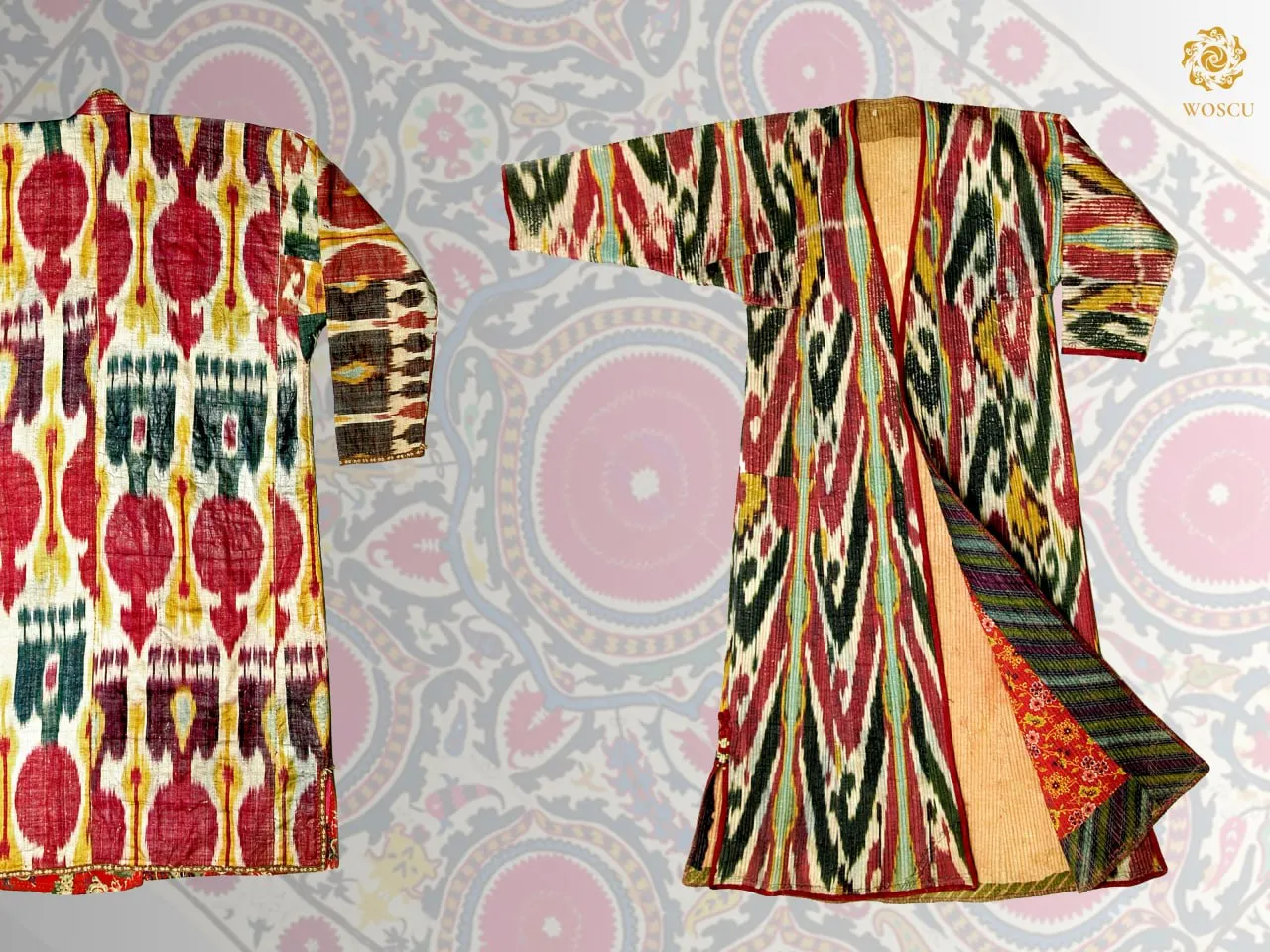
Chapans were worn by men, women and children, by sedentary as well as nomadic people of different ethnic groups. However, chapans were predominantly part of the textile culture of the Central Asian oasis cities and testified to the wearer’s wealth and prestige. Moreover, several chapans were worn one over the other.
A chapan for men has a traditional T-shape with extra-long arms. It was often sewn from half-silk abr fabric (with cotton threads in the weft). The collar is supported by several rows of quilting stitches. Russian cotton fabric is used f or lining. The edges of the flaps, collar and sleeves are fringed. In terms of its pattern, sewing technique, cut, color and overall appearance this is a typical chapan from the last third of the 19th century.
You can learn more about the topic in the book-album "Collections of the Federal Republic of Germany" (volume XI) in the series "Cultural Legacy of Uzbekistan in the World Collections".
The main sponsor of the project is the oilfield services company Eriell-Group.
